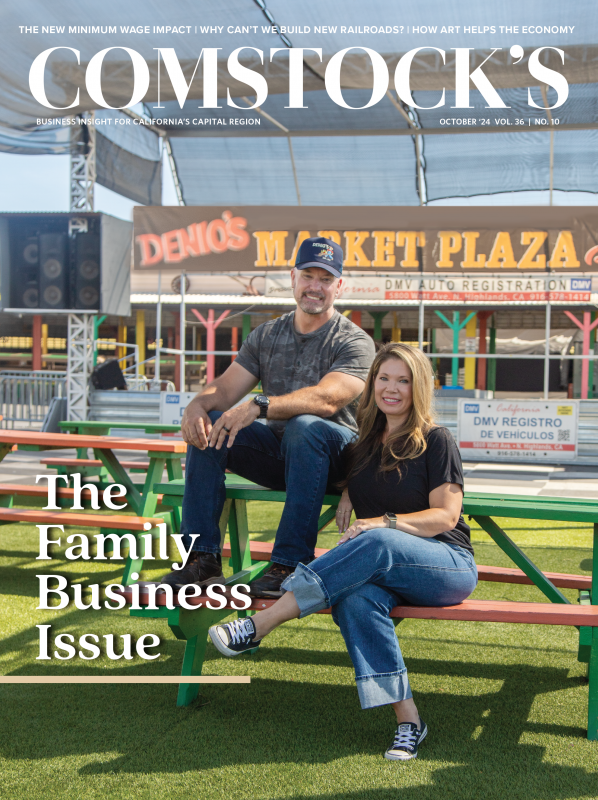Every second Saturday from May to October, the tree-lined streets and charming homes of Midtown Sacramento bear witness to something extraordinary: As many as 15,000 visitors swarm the neighborhood to experience live music, view art, shop, dine and mingle.
For Emily Baime Michaels, executive director of Midtown Association, it’s a no-brainer why businesses want to have their office in Midtown, one of Sacramento’s most vibrant and desirable neighborhoods.
Drawn by “the natural synergy and energy that’s occurring when you are around other creative and artistic people,” Baime Michaels says, it is impossible to keep up with the demand. The creative businesses in Midtown, which include galleries, music venues and theater companies like B Street at The Sofia and Capital Stage, are a draw to the area and a boon to the economy.
But Midtown is not an island in greater Sacramento. A 2022 study (see sidebar below) conducted by Americans for the Arts in partnership with Sacramento Alliance for Regional Arts (SARA) found that nonprofit arts- and culture-related activities in Sacramento County injected over $241 million into the local economy. Sacramento’s creative and cultural sector is a “formidable industry” that brings in millions of dollars and provides over 4,000 jobs, concludes the study, which was sponsored by Sacramento’s Office of Arts and Culture.
The creative economy also boosts other industries through event-related spending in retail, hospitality, food and beverage, as well as generating tax income across all levels.
Bill Blake, SARA board member and president of AMS Planning & Research, an arts management consulting agency, says these data points show that “the arts are not a frivolous amenity. There is an industry here, and we have measured it.” He adds, “Those are real dollars changing hand.”
While the 2022 study focused on nonprofit organizations in Sacramento County, the Otis California Creative Economy report looks at the entire creative sector including for-profit, media, and entertainment industries. This study shows that despite industry-wide job losses during pandemic years, the creative economy in Sacramento County contributed almost 11,000 jobs and supported over 33,000 jobs in the service industry in 2023.
As the creative industry recovers, it is essential to support creatives, says Baime Michaels. Her mission in leading Midtown Association is “to make Midtown the center for culture, creativity and vibrancy in Sacramento’s urban core.”
“We have the opportunity to drive our economy with the arts, which means that we have to protect and promote our artists in order for everybody else to thrive, which is oftentimes so different than how we think about how to drive an economy. And that is very powerful,” she says. “The majority of our arts organizations are still trying to recover from the capacity, from the donations, from the ticket sales, all of those things that were lost during COVID.”
It’s a struggle that Sacramento native Jacob Gutierrez-Montoya knows intimately as a key player in the city’s performing arts scene. B Street Theatre, where he is director of development and community partnerships, shut down in 2020 due to COVID but continued to provide virtual events for the next 18 months until it reopened in 2021.
While attendance might not be the same as it was pre-pandemic, Gutierrez-Montoya says the fact that Sacramento’s professional theaters stayed open at all is a “testament to our community, to the leadership that is there.”
“That’s the best part, is that we are still doing the thing, still making art,” he says. “And I do believe that different patrons and different supporters and sponsors, I think, really have showed up for the theaters and the arts organizations in Sacramento through all of this.”
Few have invested as much into Sacramento’s creative industry as Gutierrez-Montoya (who is a Comstock’s Young Professional honoree). At just 38 years old, he is also founding artistic director at Sacramento Contemporary Dance Theatre and co-owner and dance teacher at Hawkins’ School of Performing Arts. He founded Sacramento Contemporary Dance Theatre in 2014 and has watched the Sacramento scene evolve over the last decade.
In his view, a strong arts economy is reliant on accessibility and engagement, especially as audiences are changing.
“After the pandemic, there truly is so much to do just from your couch, just sitting there and watching TV, and access to Broadway HD — you don’t have to see a Broadway show just to have access to Broadway anymore. And I think that can be kind of difficult for ticket sales and for the arts economy as a whole,” he says.
Investing in community
It’s not just about ticket sales and accolades. There are marked social benefits from the arts: boosting health, creating opportunities for new experiences, beautifying community spaces, improving academic performance and helping young people become “better citizens,” according to Randy Cohen, Vice President of Research at Americans for the Arts.
Cohen believes his organization’s 2022 study highlights a path to achieving a “healthier Sacramento through the arts.”
He notes that 89 percent of show attendees surveyed expressed the importance of having similar cultural experiences available for future generations. “What that says to me is that (the) arts are more than a one-time transactional moment,” Cohen says.
When asked about the social impacts of the arts in their neighborhoods, over 89 percent of surveyed attendees said the activity or venue was “a source of neighborhood pride,” and nearly 86 percent said they would “feel a sense of loss” if the event or activity were to cease.
The data show the arts are an integral part of “our story, our history and our community,” Cohen says.
The creative economy also attracts visitors to Sacramento. Over 80 percent of out-of-town visitors specifically attended arts events, and 70 percent of all attendees would have traveled elsewhere for similar experiences. Likewise, a majority of local attendees said they would have traveled outside of Sacramento to attend a similar event if it was not available locally, demonstrating the power of the arts to drive tourism and keep local dollars in Sacramento.
Nurturing the arts
While not typically seen as an economic driver, arts education is crucial to the nurturing of a creative economy.
Longtime arts leader and Sacramento-based developer Gerry Kamilos helped craft Sacramento County’s first comprehensive arts education plan during his tenure on the Sacramento Metropolitan Arts Commission from 1992 to 2000. In addition to co-founding the Metropolitan Arts Partnership, the predecessor to Big Day of Giving, Kamilos was instrumental in leading the Sacramento Ballet Association restructuring in 2015 to 2019 and served as its president in 2019.
Emily Baime Michaels, executive director of Midtown Association,
has seen both the social and economic impacts of the creative
industry in Sacramento. (Photo courtesy of Emily Baime Michaels)

Kamilos also co-founded Friends of Sacramento Arts, an organization dedicated to mainstreaming arts education in our public schools and helping districts and schools access government funding programs like Proposition 28, which voters approved in 2022.
For Kamilos, investment into arts education is crucial to a strong economy. “By taking the arts and establishing creativity, innovation and the application (of art) to look at issues and items differently, that’s going to create a value to not only economics, but also create value as a society or community. So if you look at how we teach kids to become more innovative and more creative, the arts are low-lying fruits to do that because you can create a very innovative and creative experience at a very young age,” Kamilos says.
The arts have applications that expand far outside of the realm of galleries and museums, including technology and architecture. Kamilos points out that at his community development company, he regularly works with people with a creative background.
“We’re dealing with architects and engineers and designers, even attorneys that I know, and many of them have been involved and committed to the arts in some form,” he says.
In her role as the director of convention and cultural services, Megan Van Voorhis spends a lot of time thinking about how to better support the arts in Sacramento. Her department oversees the Office of Arts and Culture, the Center for Sacramento History and the Safe Credit Union Convention and Performing Arts District, which includes Old Town Sacramento.
In support of the creative economy, the city is adding an entertainment services department and streamlining the entertainment event permit process, a result of the 2023 Sacramento Music Census. The city is also focused on inclusive economic development and recently published the Sprout to Growth report that provides “potential pathways for growth of for-profit creative businesses with a determined focus on BIPOC creatives,” referring to Black, Indigenous and people of color. In 2022, the city teamed up with Sacramento County to allocate $4 million to support nonprofit arts and cultural organizations in Sacramento County through the Nonprofit Recovery Program.
Still, there is more work to do. “I think it’s going to be really critical for us to take a look at what the health of the arts and arts and cultural segment of the creative economy looks like,” Van Voorhis says.
“Those are measures of financial health and attendance and human resource capacity. I mean, those are challenges. The economics are different. The costs are higher now to do a lot of things. The pressures to secure talent and the resources they have to pay for it, those are all just big picture issues that I think probably need to look at to make sure that we know how to maneuver and help support that part of the creative economy.”
Recommended For You

What’s Holding Up Valley Rail?
The need and the plan are there, but bureaucracy once again slows progress
The project has been caught in spiraling delays, and launch dates have been pushed back to 2030. The San Jose Regional Rail Commission broke ground on just one of the half dozen proposed new stations as of late summer 2024.
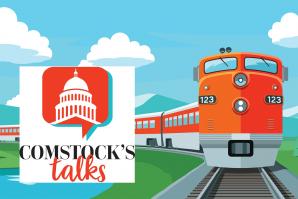
Is Our Future Tied to the Tracks? with James Stout
PODCAST EPISODE: Journalist James Stout delves into his latest feature for Comstock’s “What’s Holding Up Valley Rail?” where he investigated delays in railway expansion throughout the Central Valley. We discuss the hurdles that are baked into the system, changing attitudes towards public transit and whether hopping on a train might be more commonplace in future America.
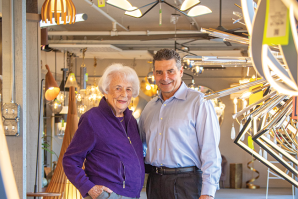
Shining Lights
Hobrecht Lighting and Lofings Lighting have longevity while competitors have come and gone
At a time when anyone can order lighting fixtures off Amazon or wander the aisles of Home Depot or Lowe’s and select something readily available and cheap, visiting Hobrecht or Lofings can feel like a trip to a different era. Still, there’s a story worth telling connected to each of these Sacramento stores which shows how family businesses can endure even in changing times.
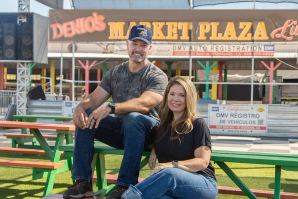
Roseville’s Unique Shopping and Entertainment Gathering Place
Family business spotlight: The Denio family embraces the future while honoring their roots
Eric and Tracy Denio remember Roseville before it was a suburban powerhouse — back when their childhood days were spent roaming among fields, ranches, ponds and gravel pits. Flash forward to today, and Denio’s Farmers Market & Swap Meet is surrounded by oceans of homes and shopping centers that span for miles in every direction. But one thing that hasn’t changed is its ethos.

A Pioneer in Organic Farming
Family business spotlight: Pleasant Grove Farms in Sutter County grows popcorn, wheat and rice the natural way
Driving along a country road in rural Sutter County and seeing endless rows of corn, you can’t help but think of the movie “Field of Dreams.” The Sills family decided to build their dream eight decades ago. Pleasant Grove Farms, a family-owned, certified organic grain and bean farm, has been growing corn and other crops for nearly 80 years.
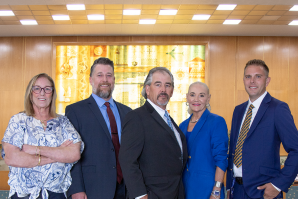
A Stockton Institution
Family business spotlight: The Bank of Stockton has been operating for 157 years
Founded in 1867, Bank of Stockton is the oldest bank in California still operating under its original charter. This longevity and continuity in serving communities with Bank of Stockton branches — as of November, there will be 21 locations throughout the Central Valley — sets this family business apart.

A Fire in the Sky
Family business spotlight: From Macy’s Fourth of July to the Space Needle, Pyro Spectaculars produces more than 400 fireworks shows a year
The show producer opens his laptop, and with a touch of the keyboard the magic begins. Music swells, and a spectacular vision of multicolor sparkling flowers explodes in the night sky, along with golden starbursts and shiny cascading waterfalls.




